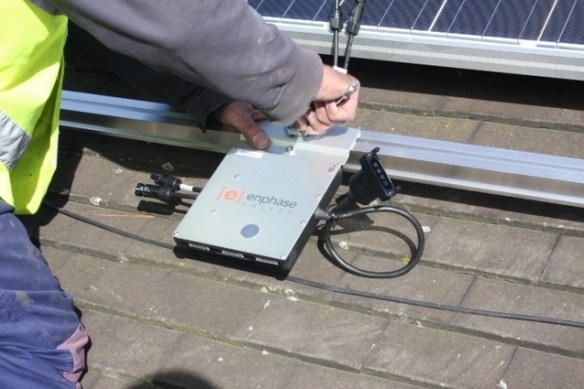Borrego Solar, a developer, and Stem, an energy storage firm, discuss when PV, storage or both will benefit commercial customers the most.
Sourced through Scoop.it from: www.greentechmedia.com
>” […] Thanks to advancements in technology, there are more energy solutions available to consumers. As a result, the confusion about which option to choose — solar, storage or solar-plus-storage — is growing.
Utility energy costs
To understand the benefits of energy storage and solar at a customer facility, it’s essential to first understand the elements of most organizations’ utility energy costs: energy charges and demand charges. This is the bread and butter for energy managers, but many leaders in finance and/or operations aren’t as aware of the energy cost mix — despite it being one of their largest budgetary line items. It should be noted that this billing structure isn’t in place in every market.
Energy charges, the price paid for the amount of energy used over the course of the billing cycle, are how most people think of paying for electricity. A price is paid for every kilowatt-hour used. Demand charges are additional charges incurred by most commercial customers and are determined by the highest amount of energy, in kilowatts, used at any instant or over some designated timeframe — typically a 15-minute interval — in that billing cycle.
Demand charges are a bit more complex. They come from a need for the grid infrastructure to be large enough to accommodate the highest amount of energy, or demand, needed at any moment in order to avoid a blackout. Every region is different, but demand charges typically make up somewhere between 20 percent and 40 percent of an electricity bill for commercial customers.
Why storage?
Intelligent storage can help organizations specifically tackle their demand charges. By combining predictive software and battery-based storage, these systems know when to deploy energy during usage peaks and offset those costly demand charges. Most storage systems run completely independently from solar, so they can be added to a building whether or not solar is present.
Storage can reduce demand charges by dispensing power during brief periods of high demand, which in essence shaves down the peaks, or spikes, in energy usage. Deploying storage is economical under current market conditions for load profiles that have brief spikes in demand, because a relatively small battery can eliminate the short-lived peaks.
For peak demand periods of longer duration, a larger, and considerably more expensive, battery would be needed, and with the higher material costs, the economics may not be cost-effective. As system costs continue to decline, however, a broader range of load profiles will be able to save with energy storage.
Why solar?
For the commercial, industrial or institutional energy user, solar’s value proposition is pretty simple. For most facilities in states with high energy costs and a net metering regime in place, onsite solar can reduce energy charges and provide a hedge against rising electricity costs. The savings come primarily from producing/buying energy from the solar system, which reduces the amount of energy purchased from the utility, and — when the installation produces more than is used — the credit from selling the excess energy to the grid at retail rates.
The demand savings are a relatively small part of the benefit of solar because the timing of solar production and peak demand need to line up in order to cut down demand charges. Solar production is greatest from 9 a.m. to 3 p.m., but the peak period (when demand for energy across the grid is highest) is typically from 12 p.m. to 6 p.m. If demand-charge rates are determined by the highest peak incurred, customers with solar will still fall into higher demand classes from their energy usage later in the day, when solar has less of an impact.
That being said, solar can reduce a significant portion of demand charges if the customer is located within a utility area where solar grants access to new, solar-friendly rate schedules. These rate schedules typically reduce demand charges and increase energy charges, so the portion of the utility bill that solar can impact is larger. […]”<









